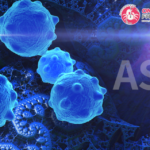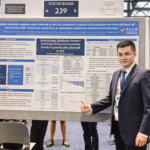
Editor's Note: Traditionally, radiation dosage for yttrium-90 (90Y) resin microsphere radiation segmentectomy (RS) was determined using body surface area or partition models, which often resulted in lower prescription activities. Recent studies have used the Medical Internal Radiation Dosimetry (MIRD) formula to determine radiation doses, providing higher tumor absorption doses. A recent retrospective study published in Radiology by Beth Israel Deaconess Medical Center, Harvard Medical School, demonstrated that hepatocellular carcinoma (HCC) patients receiving 90Y resin microsphere RS achieved high tumor absorption doses and sustained tumor remission with good safety profiles. International Hepatology invited Professor Lin Zhang from the Tsinghua University Affiliated Beijing Tsinghua Chang Gung Hospital Hepato-Pancreato-Biliary Interventional Center to introduce and comment on this study.Study Overview: Efficacy and Safety of 90Y Resin Microsphere Radiation Segmentectomy for Hepatocellular Carcinoma
Background: Data on using the MIRD model to determine yttrium-90 (90Y) resin microsphere dosage for radiation segmentectomy (RS) in treating hepatocellular carcinoma (HCC) is limited. This study aimed to evaluate the efficacy and safety of 90Y resin microsphere HCC RS using the MIRD model and analyze the correlation between post-treatment doses and efficacy.
Materials and Methods: This retrospective single-center study included adult patients with HCC (tumor size < 8 cm) who received 90Y resin microsphere RS between July 2014 and December 2022. Postoperative PET/CT scans and dosimetry were performed, and 90Y resin microsphere activity was calculated using the MIRD formula. Adverse events were assessed using the Common Terminology Criteria for Adverse Events version 5.0 (CTCAE 5.0). Tumor response was evaluated per-lesion and overall (per-patient) using the modified Response Evaluation Criteria in Solid Tumors (mRECIST), including complete response (CR), objective response rate (ORR), disease control rate (DCR), and duration of response (DoR). Overall survival (OS) was analyzed using Kaplan-Meier analysis.
Patients received absorbed doses ranging from 120-350 Gy (120-199 Gy in 11 cases, 200-299 Gy in 29 cases, and 300-350 Gy in 27 cases). Before June 2018, the daily calibration dose was 3.0 GBq (7/67, approximately 68 Bq per microsphere); after June 2018, a 3-day calibration dose of 7.0 GBq (60/67, approximately 158 Bq per microsphere) was used.
Results: A total of 67 HCC patients were enrolled, with a median age of 69 years (IQR, 63-78 years), including 54 males. The median tumor absorbed dose was 232 Gy (IQR, 163-405 Gy). Baseline characteristics are shown in the table below. Eighty-four percent of patients had a single lesion, 15% had two lesions, 84% had multi-lobe involvement, 1% had new tumors independent of previous treatment lesions, and 25% had new tumors adjacent to previous treatment lesions.
The operation characteristics of 90Y RS are shown in the table below. Most (90%) patients received single-vessel injections; the median prescription absorbed dose (calculated by MIRD) was 250 Gy; 78% of patients achieved a prescription dose infusion rate of over 90%; 32% of patients had a postoperative absorbed dose of ≥300 Gy.
At 3 months, 47 out of 67 patients (70%) achieved complete response per lesion, and 41 patients (61%) achieved overall complete response. At 6 months (n=46), the per-lesion ORR and DCR were both 94%, and the overall ORR and DCR were both 78%. A total of 88% (95% CI: 79%-99%) and 72% (95% CI: 58%-90%) of patients achieved per-lesion and overall sustained remission for ≥1 year, respectively.
At 1 month, among 67 patients, 1 patient (1.5%) experienced a grade 3 clinical adverse event (abdominal pain). The median OS was 26 months (95% CI: 20, not reached); the median OS was 23 months for treated patients, and not reached for treatment-naive patients.
Exploratory analysis of 50 patients who underwent PET/CT scans post-90Y RS showed that patients with tumor absorbed doses of ≥300 Gy had a 2-year disease progression rate of only 18%, significantly lower than patients with tumor absorbed doses of <300 Gy (18% vs. 61%; P=0.047). None of the high-dose group patients experienced local progression by the end of the follow-up.
For 44 patients with isolated lesions evaluated by PET/CT post-RS, 23 patients did not reach the MIRD-prescribed dose, while 21 patients exceeded the MIRD-prescribed dose.
Conclusion: Among HCC patients undergoing 90Y resin microsphere RS, 88% and 72% of patients achieved sustained remission for ≥1 year per lesion and overall, respectively, with only one grade 3 adverse event reported. Patients receiving post-treatment doses of ≥300 Gy benefited more in terms of disease progression control.
Expert Commentary: Yttrium-90 (90Y) radiation segmentectomy (RS) is a treatment for HCC involving two or fewer Couinaud segments, where high-dose microspheres are infused into the affected liver segments or subsegments, achieving effects similar to surgical resection through internal radiotherapy.
In clinical practice, 90Y resin microsphere dosage is often calculated using body surface area or partition models. However, some small-sample RS studies using the MIRD formula have shown that it can increase tumor or tissue absorbed doses while reducing side effects. For example, a study of 18 patients using this method to determine 90Y resin microsphere doses showed a 94% complete response rate with only one serious adverse event. Another study on resin microsphere RS showed that a tumor absorbed dose of 247 Gy measured by 90Y SPECT/CT resulted in a 95% complete response rate within 3 months without any ≥3 grade adverse events.
The retrospective study by Sarwar A et al. included a larger sample (n=67) and achieved a 94% ORR at 6 months, with 88% of patients having sustained remission for ≥1 year. The median OS was 26 months. Safety was also excellent, with no treatment-related adverse events during the treatment period, and only one patient experiencing grade 3 abdominal pain at 1 month post-treatment. Exploratory analysis showed that patients with tumor absorbed doses ≥300 Gy had a lower disease progression rate (18% vs. 61%). In the SARAH study (comparing sorafenib vs. 90Y resin microsphere RS for advanced HCC), patients with tumor absorbed doses ≥100 Gy had better OS and disease control compared to those with <100 Gy. This study raised the predictive threshold to 300 Gy, significantly higher than the SARAH study.
Combining clinical practice experience and the study’s operational process, several aspects are worth further discussion. Firstly, the study included HCC patients with tumors <8 cm. The definition of RS is still debatable, whether based on tumor size (extent of liver involvement) or dosage intensity. There is no standard yet, and future work should refine the definition of RS under the guidance of Academician Dong Jiahong’s “precision surgery” concept. Secondly, the study preliminarily confirmed that 90Y resin microspheres, like glass microspheres, can also use the MIRD formula for dose estimation, although the prescribed absorbed doses differ. Resin microspheres adopting a “flexible dose (high specific activity dose)” are significant for RS. The study used daily and 3-day calibration doses, but our center can use a 4-day calibration dose. The number of microspheres and the dose per microsphere can affect efficacy and safety. Thirdly, overall, higher doses result in better outcomes, as seen with the >300 Gy subgroup in this study. However, the uniform distribution of microspheres is also crucial. This study did not provide data on microsphere distribution. Some tumors exhibit significant vascular heterogeneity, requiring pre- and post-RS PET/CT comparisons. In clinical practice at Tsinghua Chang Gung Hospital, RS selection includes a wider range, such as larger tumor involvement, higher prescription doses, and more complex technical operations. Using the world’s first “Infusion Withdraw Infusion (IWI)” 90Y injection technique, we can super-selectively catheterize arterial supply areas poorly covered during mapping, inject a small number of microspheres, and then withdraw to the mapping catheter position to inject the remaining microspheres, significantly improving the uniformity of 90Y resin microsphere distribution within the tumor.
However, this study also has limitations. Firstly, the sample size is still small, and patient heterogeneity is large, including differences in tumor numbers, vascular invasion, and prior treatments, potentially affecting overall efficacy evaluation and resulting in wide 95% confidence intervals. Secondly, the median follow-up was only 11 months, while the median OS was 26 months, suggesting that the study may not have captured survival outcomes for all patients. Additionally, the 300 Gy predictive threshold provided by the study cannot yet be considered definitive and requires larger samples and confirmatory analyses for validation.


